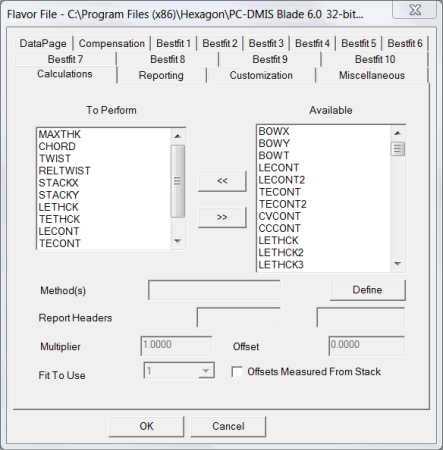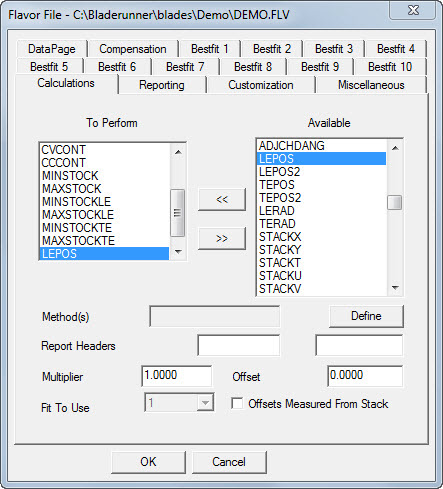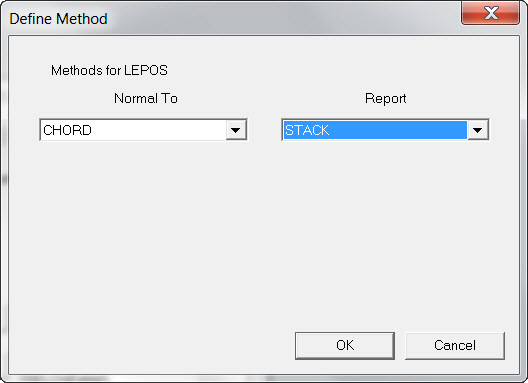
Use the Calculations tab in the Flavor file dialog box to add and remove various calculations and define the methods that PC-DMIS Blade uses for analysis. Calculation modifiers (described below) also affect the calculations.

Flavor File dialog box - Calculations tab
Available list - Select one
or more values from this list and then click the left arrow button  .
The selected values appear in the To Perform
List.
.
The selected values appear in the To Perform
List.
To select multiple values, press Ctrl or Shift.
To Perform list - Calculations
in this list are performed during PC-DMIS Blade
analysis. Select each calculation and edit the values from the options
below to affect the way the calculation is performed. To remove values
from this list, select the value(s) and then click the right arrow button
 .
.
Method(s) box - Click the Define button and then select the method(s) from the list(s) in the Define Method dialog box. The defined method(s) affect the selected calculation. If no method is available for the selected calculation, "No Methods for This Calc" appears when you click Define. Following is an example of an entry in the Flavor file:
CHORD METHOD CALIPER
Following are examples of the Calculations tab and Define Method dialog box for the LEPOS calculation:

Calculations tab for LEPOS calculation

Define Method dialog box
PC-DMIS Blade can report profile or contour to the ISO and ASME specification. The two methods available are:
MAX_MINUS_MIN - This method is for the ASME specification. The maximum profile deviation minus the minimum profile deviation of the airfoil segment. This is the default method.
DOUBLE_WORST_DEVIATION - This method is for the ISO specification. This is twice the worst case profile deviation (whether maximum or minimum) of the airfoil segment.
You can use these methods for these calculations:
CCCONT
CVCONT
LECONT
TECONT
LECONT2
TECONT2

Define Method dialog box for the LECONT calculation from the Flavor File dialog box Calculation tab
Calculation Modifiers
Report Headers box on one-page Matrix report - The CALC name can be modified. Provides text for LABEL1 and LABEL2 for the selected calculation. LABEL1 truncates to 19 characters. LABEL2 truncates to 9 characters. Following is an example of an entry in the Flavor file:
LEANGLE LABEL1 NOSE ANGLE
LABEL1 should only be longer than nine characters for the first calculation of an associated pair (for example, BOWX and BOWY).
Multiplier box - This modifier defines a multiplication factor for the selected calculation. Typical uses for this modifier would be to reverse the sign of a calculation (for example, –1) or possibly to convert between English and metric units (for example, 25.4 or 0.03937). This type is specified by the calculation keyword, followed by the word MULTIPLIER, followed by the numeric value. Following is an example of an entry in the Flavor file:
LERAD MULTIPLIER 2.0000
Offset box - You can use this box to choose an offset for the measured value. The formula for the final result is:
final result = offset + multiplier * raw result
Following is an example of an entry in the Flavor file:
BOWY OFFSET 1.5630
Fit To Use list - The selected calculation calculates using the best fit number specified in the list. Following is an example of an entry in the Flavor file:
CVCONT USEBESTFIT 3
Offsets Measured From Stack check box - The offsets are from the stack axis and not the nose point.
More: